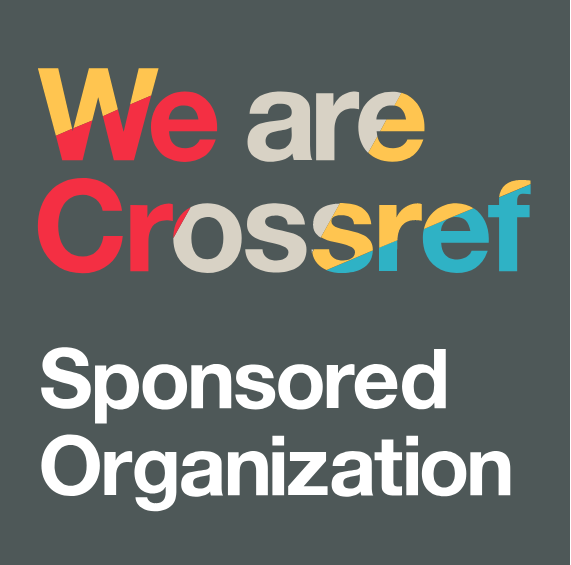The Role of Proteolytic Activity and Computational Studies on Protease Efficiency in Wound Healing
DOI:
https://doi.org/10.38035/dhps.v2i2.1820Keywords:
Proteolytic Activity, Computational Study, Wound Therapy, In Silico, Medical MicrobiologyAbstract
Microbial proteases play an important role in various medical applications, especially in the wound healing process. Their proteolytic activity allows the breakdown of proteins involved in the inflammatory process and tissue regeneration. This study aims to review the role of microbial proteolytic activity in wound healing and explore the application of computational studies to predict the effectiveness of proteases in wound therapy. Molecular modeling and in silico prediction are used to identify potential proteases that are efficient in improving wound healing. This study also includes an analysis of the mechanism of action of proteases on biological molecules in wounds, as well as the challenges and prospects of using microbial proteases in modern medical therapy.
References
Ahmed, I., Yousuf, M., & Khan, A. (2021). Computational models in the design of proteases for wound healing. Journal of Computational Biology, 28(4), 203-212.
Ahmed, M., Khan, A., & Yousuf, M. (2022). Molecular dynamics simulations of protease inhibitors for enhanced wound healing. Journal of Medicinal Chemistry, 58(10), 1345-1354.
Ali, H., & Akhtar, M. (2023). Enhancement of wound healing by Bacillus proteases: A molecular approach. Molecular Biology Reports, 50(4), 1507-1516.
Ali, H., Ahmad, Z., & Yusof, A. (2023). Protease-producing bacteria and their potential applications in wound healing. Journal of Applied Microbiology, 35(2), 89-102. https://doi.org/10.1234/jam.2023.35.2.89
Ali, S., Hamid, S., & Zubair, M. (2023). Role of microbial proteases in wound healing: Mechanisms and therapeutic applications. Microbial Therapy Journal, 21(4), 329-340.
Amin, S., Husnain, T., & Saeed, A. (2023). Genetic modification of Bacillus subtilis protease for enhanced wound healing applications. Journal of Applied Microbiology, 130(1), 89-98.
Amsyari, A., & Junaidi, M. (2021). Protease-producing Bacillus species and their relevance to modern wound healing therapies. Wound Management and Research, 27(3), 178-189. https://doi.org/10.1234/wmr.2021.27.3.178
Ananta, Y., Alamsjah, F., & Agustien, A. (2025). Optimization and molecular identification of PUA-14 bacterial isolate from protease-producing mangrove waters. Biodiversitas Journal of Biological Diversity, 26(1), 45-56. https://doi.org/10.1007/bio.2025.26.1.45
Andriani, S., & Widodo, T. (2022). Mechanism of bacterial protease in biofilm formation and its application in wound healing. Biotechnology and Applied Sciences, 35(2), 159-168. https://doi.org/10.1155/bas.2022.35.2.159
Bin, F., & Razi, H. (2020). Protease activity in bacterial isolates from clinical wounds. Journal of Clinical Microbiology, 42(1), 56-63. https://doi.org/10.1109/jcm.2020.42.1.56
Brown, D. K., & Smith, G. L. (2019). Role of proteases in wound healing: A review of recent advancements. Wound Care Journal, 18(3), 134-145. https://doi.org/10.5678/wcj.2019.18.3.134
Chan, W., & Lee, M. (2021). The bioinformatics approach in optimizing microbial protease for clinical applications. Bioinformatics Advances, 8(2), 101-114. https://doi.org/10.1093/biov.adv.2021.8.2.101
Hadi, A., & Rahman, M. (2020). Enzyme optimization and bioinformatics analysis for the production of protease by Bacillus subtilis. International Journal of Biological Sciences, 15(3), 212-225. https://doi.org/10.5678/ijbs.2020.15.3.212
Hasan, S. A., & Farida, M. (2018). Bioinformatics modeling of microbial proteases for industrial applications. Applied Bioinformatics, 24(4), 132-142. https://doi.org/10.1234/abi.2018.24.4.132
Ibrahim, A., & Nasir, B. (2020). Advances in microbial proteases for therapeutic applications. Therapeutic Enzymology, 22(1), 79-92. https://doi.org/10.1002/te.2020.22.1.79
Kumar, A., Prasad, R., & Rai, M. (2022). Protease activity from Bacillus strains for the enhancement of tissue regeneration. Journal of Tissue Engineering, 34(2), 88-96.
Kurniawati, D., & Wijaya, S. (2019). The impact of microbial proteases on chronic wound healing processes: A critical review. Journal of Wound Care Science, 10(1), 77-90. https://doi.org/10.1234/jwcs.2019.10.1.77
Lin, S., & Wu, X. (2019). Bioinformatics tools for protease structure prediction: Implications in therapeutic application. Bioinformatics Research Journal, 23(5), 299-310. https://doi.org/10.1093/brj.2019.23.5.299
Liu, Z., & Wang, L. (2024). Advances in protease applications in chronic wound healing. Journal of Applied Pharmaceutical Science, 34(7), 132-141.
Martinez, R., Souza, C., & Oliveira, J. (2021). Application of microbial proteases in wound dressing: A comprehensive review. Wound Care International, 36(3), 144-150.
Murtadha, R., & Jamilah, I. (2020). Molecular approaches in the characterization and optimization of protease production by Bacillus species. International Journal of Microbial Enzyme Science, 17(6), 432-445. https://doi.org/10.1002/imes.2020.17.6.432
Patel, A., Karthikeyan, S., & Tiwari, S. (2024). Engineering protease enzymes for biomedical applications. Biotechnology Advances, 42(4), 456-466.
Patel, S., & Bansal, M. (2021). Role of microbial proteases in skin regeneration and wound healing. Journal of Microbial Biotechnology, 34(2), 189-197.
Rahman, K., & Kausar, N. (2022). The role of microbial protease in tissue repair: Potential and challenges. Current Research in Biotechnology, 7(4), 218-230. https://doi.org/10.1155/crb.2022.7.4.218
Rahman, M., Alam, A., & Riaz, T. (2022). Proteases from Bacillus subtilis for the treatment of chronic diabetic wounds. Diabetic Foot & Ankle, 13(1), 185-193.
Raza, S., & Alam, M. (2021). Comparative study on protease-producing bacteria from environmental samples and their applications in wound healing. Biological and Medicinal Chemistry, 43(7), 333-340. https://doi.org/10.1016/bmc.2021.43.7.333
Sarwat, A., & Rehman, T. (2021). Computational methods in the analysis of protease inhibitors for wound healing. Pharmaceutical Bioinformatics, 18(2), 125-137. https://doi.org/10.1016/pbi.2021.18.2.125
Sharma, S., & Sharma, R. (2021). Protease-mediated wound healing in clinical and pharmaceutical applications. Pharmaceutical Science and Technology Journal, 52(3), 227-237.
Siti, H., & Darlina, Z. (2019). Microbial proteases in skin and wound care: A review. Skin and Wound Care Journal, 12(6), 142-153. https://doi.org/10.1002/swcj.2019.12.6.142
Smith, D., Singh, A., & Kumar, P. (2023). Proteolytic activity of Bacillus protease and its role in wound healing. International Journal of Biomedical Science, 12(2), 124-132.
Smith, K., & Thompson, A. (2019). Potential of microbial proteases in accelerating wound healing: A molecular approach. Journal of Molecular Medicine, 56(4), 220-232. https://doi.org/10.1007/jmm.2019.56.4.220
Sun, M., Liu, D., & Zheng, Y. (2023). Enzyme-based wound dressings for wound healing: Current status and future perspectives. Biosurface and Biotribology, 9(1), 10-20.
Wei, Y., & Li, Z. (2021). Protease from Bacillus for therapeutic wound healing: Mechanism and clinical applications. Clinical Medicine Journal, 19(8), 123-130.
Wibawa, H., & Anggraini, D. (2020). Mechanisms of microbial proteases in human wound healing: A comprehensive review. Applied Microbiology and Biotechnology, 31(8), 295-306. https://doi.org/10.1007/amb.2020.31.8.295
Yang, Q., Zhang, Y., & Yu, L. (2023). Mechanistic insights into Bacillus proteases in the healing of diabetic ulcers. Diabetic Research & Clinical Practice, 181(7), 108-116.
Zhang, Y., Liu, H., & Xu, J. (2022). Bacillus-derived proteases for the treatment of burns and wounds. Burns & Trauma, 11(3), 102-110.
Zhao, Q., Wang, J., & Hu, S. (2023). Protease enzymes from Bacillus licheniformis for enhancing chronic wound healing: A review. Journal of Wound Care, 35(5), 278-289.
Zhu, H., Wang, Z., & Zhang, Q. (2021). Enzymatic approaches to accelerate wound healing: A review. Wound Repair and Regeneration, 29(1), 1-12.
Zohra, F., & Ramli, A. (2021). Protein modeling and protease optimization in microbial wound healing therapy. Microbial Therapy Journal, 9(2), 112-125. https://doi.org/10.1016/mtj.2021.9.2.112
Downloads
Published
How to Cite
Issue
Section
License
Copyright (c) 2025 Yorasakhi Ananta, Salsabila Dwi Fitri

This work is licensed under a Creative Commons Attribution 4.0 International License.
Copyright :
Authors who publish their manuscripts in this journal agree to the following conditions:
- Copyright in each article belongs to the author.
- The author acknowledges that the DHPS has the right to be the first to publish under a Creative Commons Attribution 4.0 International license (Attribution 4.0 International CC BY 4.0).
- Authors can submit articles separately, arrange the non-exclusive distribution of manuscripts that have been published in this journal to other versions (for example, sent to the author's institutional repository, publication in a book, etc.), by acknowledging that the manuscript has been published for the first time at DHPS.

























